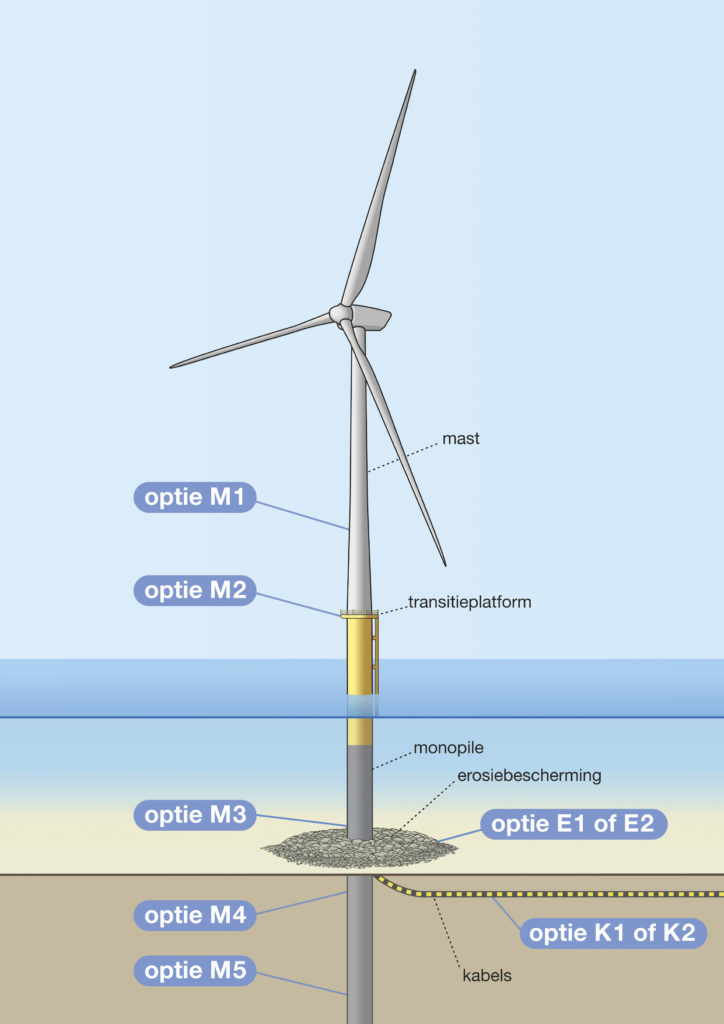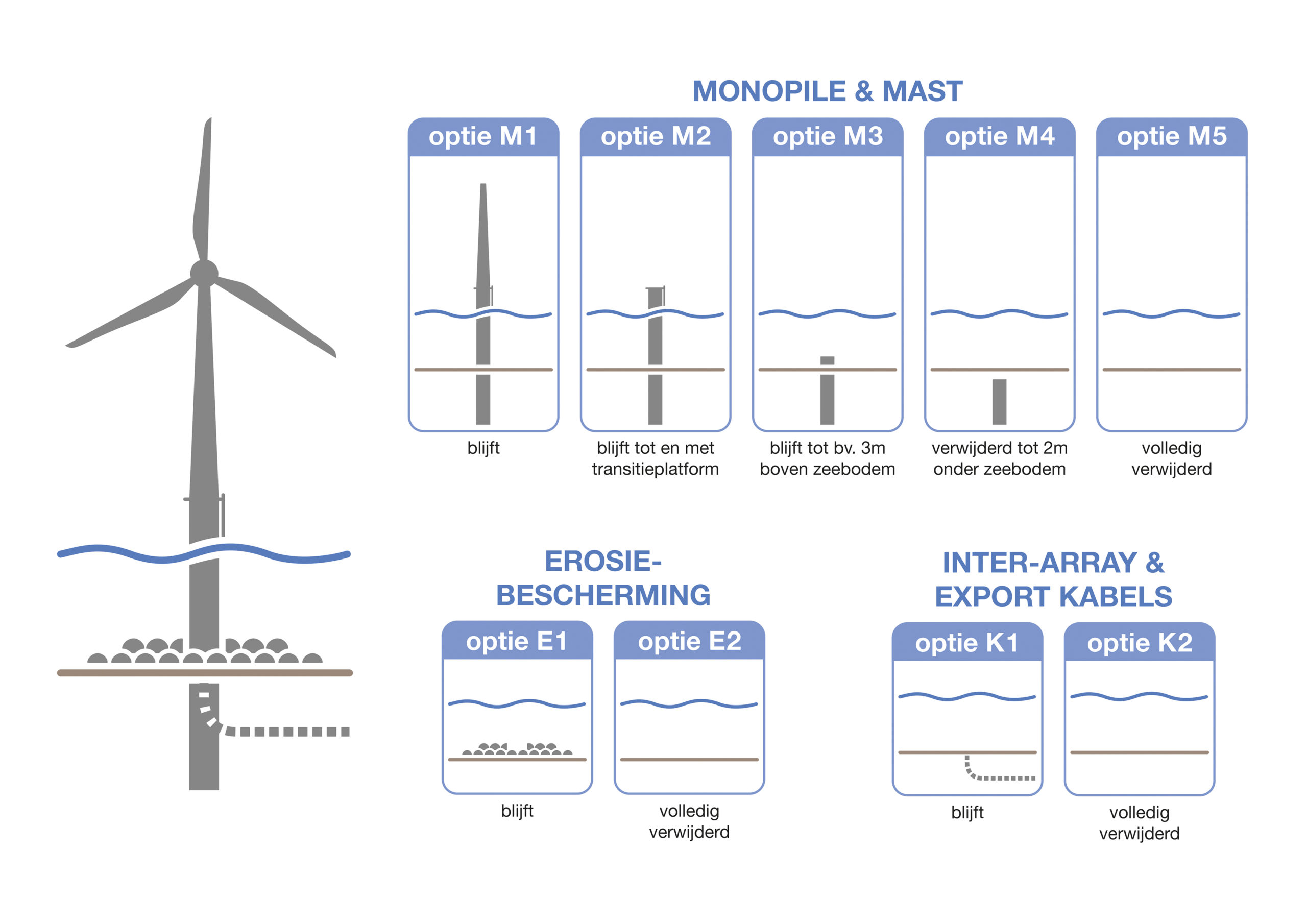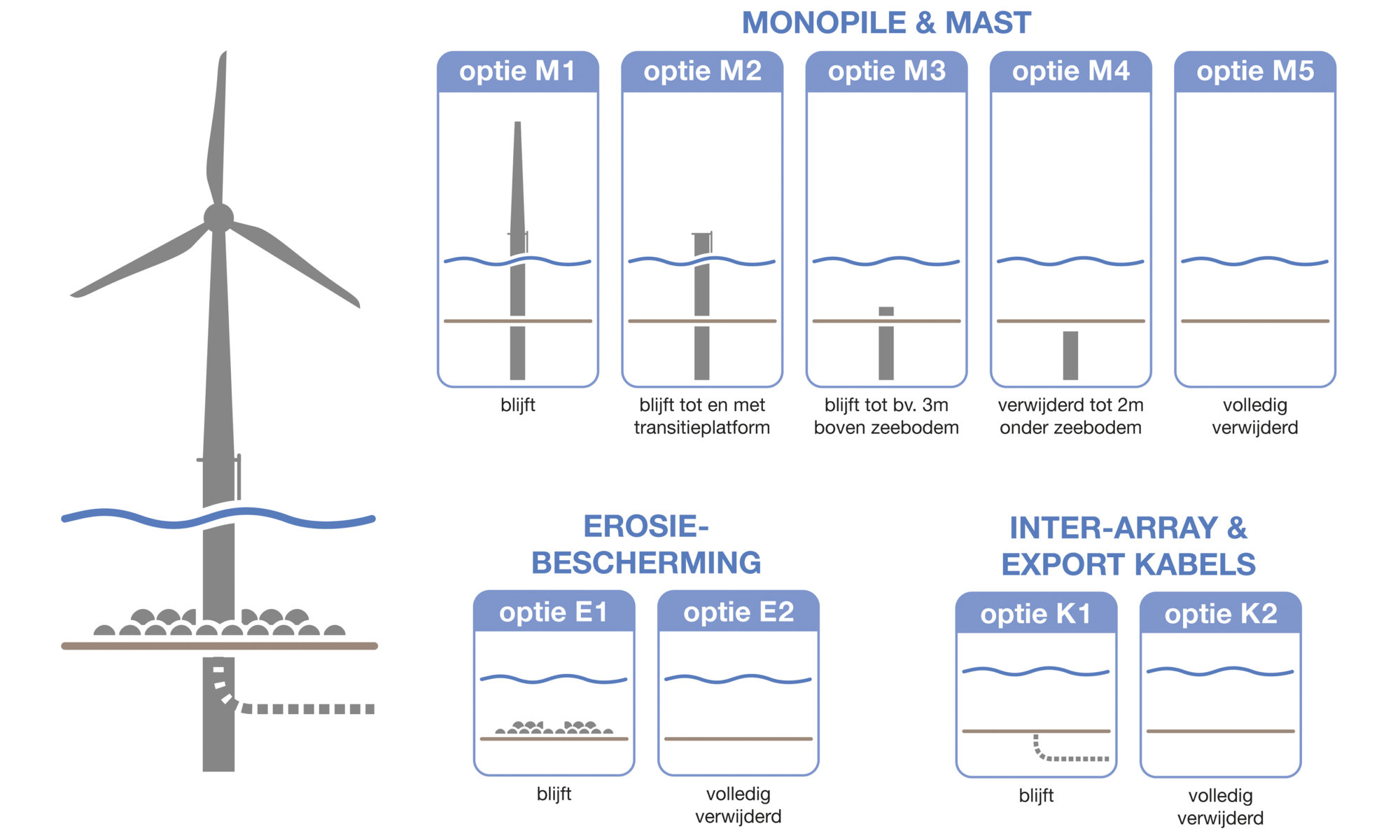L’aquaculture en mer et le démantèlement des parcs éoliens offshore présentent de nombreuses opportunités et de nombreux défis. Afin de pouvoir élaborer de manière efficace la future politique relative à ces activités, il est essentiel que les priorités et les préoccupations des nombreuses parties prenantes soient entendues et intégrées, en toute transparence, dans une vision globale sur laquelle les décideurs politiques pourront ensuite s’appuyer.
Dans ce cadre, l’Institut royal des Sciences naturelles de Belgique (IRSNB) a lancé deux pistes participatives distinctes sur ces thèmes, sur demande du Service Milieu marin du SPF Santé publique, Sécurité de la chaîne alimentaire et Environnement et du ministre de la Mer du Nord, Vincent Van Quickenborne. Plus de 50 organisations différentes ont répondu à cette initiative mettant en avant une coopération interactive.
Steven Degraer, Institut royal des sciences naturelles de Belgique : « Réunir les parties prenantes pour dialoguer permet toujours d’obtenir des échanges surprenants, et ce pour toutes les parties présentes autour de la table. C’est le moyen d’apprendre à se connaître, de partager des idées et de rechercher ensemble un avenir durable pour la mer. »
Le coup d’envoi des deux pistes a été donné à Bruges le mardi 18 octobre 2022. Les parties prenantes se sont réunies presque tous les mois et ont également travaillé entre les sessions à l’élaboration d’une vision. Lors d’un événement de clôture le lundi 15 mai, également à Bruges, le résultat des visions sur l’aquaculture et le démantèlement des parcs éoliens offshore dans la partie belge de la mer du Nord ont été présentées aux participants des deux pistes ainsi qu’à la presse.
Aquaculture
Les éléments clés identifiés lors de la concertation des parties prenantes sur l’aquaculture en mer sont les suivants :
La production alimentaire durable pour notre génération et les générations futures est l’objectif principal de l’aquaculture dans la partie belge de la mer du Nord. Différents organismes conviennent à cette fin. Il s’agit avant tout d’huîtres et de moules, mais aussi d’algues, de bulots, de coquilles Saint-Jacques et d’autres bivalves, de crustacés et de poissons. L’aquaculture de méduses, de concombres de mer, d’oursins, d’herbes marines et même de bactéries est également théoriquement possible. La question de savoir dans quelle mesure il est possible de combiner l’élevage de différentes espèces (aquaculture multitrophique intégrée) dans la mer du Nord belge doit faire l’objet d’une étude plus approfondie.

D’autres activités économiques (telles que la production de carburants et de cosmétiques, le tourisme) peuvent être liées à l’aquaculture et jouer ainsi un rôle dans l’élimination des résidus.
L’utilisation optimale de l’espace disponible est l’une des principales préoccupations. Les conflits spatiaux potentiels avec les autres usagers de la mer ont été évoqués, ainsi que les possibilités d’utilisation multiple de l’espace.
L’attention portée à l’environnement est également importante. Si les éventuelles formes d’impact négatif suscitent des préoccupations, il y aurait toutefois des possibilités de combiner l’aquaculture avec la conservation et la restauration de la nature et la protection du littoral.
Principes de base et conditions préalables
Plusieurs conditions doivent être respectées lors de la recherche de sites et de formes d’aquaculture appropriés. Les conditions préalables importantes sont les suivantes :
- Tout d’abord, il est important de comprendre dans quels endroits les espèces cibles se plaisent. Cela varie d’une espèce cible potentielle à l’autre et dépend de facteurs abiotiques et biotiques propres à chaque espèce.
- L’aquaculture durable doit être extractive, ce qui signifie qu’aucun nutriment ou médicament supplémentaire ne doit être ajouté. Elle ne doit pas non plus dépasser la capacité de charge de l’écosystème naturel environnant.
- Dans les réserves naturelles, l’aquaculture ne sera plus autorisée avant que les zones ne soient en bon état de conservation, et uniquement avec des espèces indigènes.
- Les produits de l’aquaculture doivent respecter les exigences communes en matière de sécurité alimentaire.
D’autres conditions préalables à respecter dans la mesure du possible concernent la sécurité des personnes et du trafic maritime, l’utilisation multiple de l’espace, l’acceptabilité sociale, les dommages environnementaux, la coopération, l’empreinte écologique, les aspects techniques et d’ingénierie, les aspects socio-économiques, les aspects juridiques et d’assurance et le contexte général de la gouvernance.
L’avenir
Une mer du Nord en bon état de conservation est une condition préalable à une capacité d’accueil suffisante pour l’aquaculture. Pour promouvoir les opportunités et atténuer les inquiétudes, des critères d’octroi de licences doivent être établis de manière bien réfléchie. Les obstacles administratifs et la paperasserie doivent être supprimés. La mise en place d’un système central de surveillance et d’alerte et d’une plateforme de connaissances communes présenterait de nombreux avantages. Des subventions ciblées pourraient aider à combler les lacunes en matière de connaissances et à développer des opportunités.
Au cours de la phase suivante, des données et du matériel cartographique supplémentaires seront récoltés afin de répertorier les opportunités en ce qui concerne l’aquaculture dans la partie belge de la mer du Nord, en tenant compte des principes de base et des conditions préalables prédéfinies. L’ensemble de ces éléments constituera une base solide pour le soutien au niveau stratégique.
Il est également souhaitable de prévoir une coopération et coordination entre les pays de la mer du Nord sont, y compris en ce qui concerne l’élaboration d’une réglementation européenne uniforme.
Vincent Van Quickenborne, ministre de la Mer du Nord : « La mer du Nord est un terrain propice à l’innovation. Avec pas moins de 53 partenaires, nous avons uni nos forces ces derniers mois sur deux thèmes importants. Nous avons en effet beaucoup d’espace pour faire de l’aquaculture, et ce, malgré la superficie limitée de notre mer du Nord. Par exemple, entre les éoliennes. Nous sommes en train de cartographier ces zones. Nous cherchons quelles espèces sont susceptibles d’être combinées avec succès. Et nous tenterons d’obtenir des fonds européens pour investir dans ce domaine. »
Démantèlement des parcs éoliens offshore
Les licences d’exploitation des parcs éoliens déjà opérationnels en Belgique datent d’il y a 10 à 15 ans. Le démantèlement de cette première génération d’éoliennes approche à grands pas. Tout comme l’installation de ces parcs fut un travail de pionnier, leur démantèlement le sera également. En outre, au fil du temps, de nombreuses questions ont été soulevées concernant le processus de démantèlement progressif au cours de la période 2034-2047. D’une part, les nouvelles technologies se développent à une vitesse fulgurante et, d’autre part, de nouvelles connaissances émergent constamment sur l’interaction entre les parcs éoliens et la biodiversité.
Nouvelles technologies : De nouvelles options pour le démantèlement des parcs éoliens en mer sont en cours de développement, en ce qui concerne les techniques, les matériaux et les coûts. Par exemple, on étudie les possibilités de réutilisation et de recyclage des pales, ainsi que les moyens de retirer du sol l’intégralité des fondations monopieux.
Biodiversité : Le suivi des effets écologiques des parcs éoliens montre qu’une biodiversité supplémentaire a été créée à l’intérieur et autour des éoliennes offshore, ce que l’on appelle l’effet récif artificiel. Les nouveaux substrats durs abritent une riche faune sous-marine d’invertébrés, qui attire à son tour diverses espèces de poissons, d’oiseaux et de mammifères marins.
Options de démantèlement
Pour démanteler l’infrastructure d’un parc éolien en mer, il existe théoriquement plusieurs options. Les fondations peuvent être enlevées entièrement ou partiellement, ou rester entièrement sur le site. Les couches de protection contre l’érosion et le câblage peuvent également être enlevés ou rester sur place. La majorité des participants à la vision d’avenir se sont prononcés en faveur de l’enlèvement complet de toutes les structures construites par l’homme.


La faune naturelle et souhaitée des substrats sableux dynamiques est adaptée à une dynamique élevée, de sorte qu’elle peut bien résister aux perturbations temporaires causées par les activités de démantèlement et se rétablir rapidement. La nouvelle biodiversité créée par l’effet du récif artificiel n’est pas considérée comme suffisamment intéressante dans un écosystème de banc de sable naturellement dynamique pour être laissée intacte, car il s’agit d’un habitat qui n’existe pas à l’état naturel sur ce site. En outre, le démantèlement dans le cadre du renouvellement (repowering) fournira à nouveau un substrat dur sous la forme d’un nouveau parc éolien, de sorte que ces habitats, ces abris et ces possibilités de repos supplémentaires se rétabliront progressivement et à court terme.
Laisser une partie de l’infrastructure en place pourrait être utile pour y attacher des structures pour l’aquaculture, la pêche passive ou comme base de recherche (capteurs, tests de nouvelles technologies, etc.), par exemple, mais ces fonctionnalités pourraient également être envisagées pour des éoliennes qui n’ont pas encore été construites. En outre, le fait de conserver (une partie) des monopieux et de laisser les barrières anti-érosion et les câbles en place ne compense pas les inconvénients liés à l’insécurité et à l’occasion manquée de réutiliser des matériaux.
En revanche, les exploitants de parcs éoliens, qui devront après tout procéder au démantèlement et en assumer les coûts, se demandent à juste titre s’il est possible et abordable, d’un point de vue technique, d’enlever complètement un monopieu. En outre, l’enlèvement de la protection contre l’érosion, même si elle doit être réutilisée dans le même but lors du renouvellement, est une activité coûteuse et qui prend du temps. Des recherches et des consultations supplémentaires semblent donc encore nécessaires pour identifier la faisabilité et les avantages et inconvénients des différents scénarios de démantèlement (enlèvement complet, enlèvement partiel ou abandon complet de l’infrastructure du parc éolien, y compris des couches de protection contre l’érosion). En commençant à temps, avec ces pistes pour une nouvelle vision comme première composante, nous donnons aux partenaires publics et privés concernés le temps de se préparer.
Informations utiles pour les futurs parcs éoliens
Les résultats des pistes participatives donnent également une idée de la manière dont les futurs parcs éoliens peuvent être conçus de manière optimale, en tenant compte de la phase de démantèlement. En particulier, la promotion de l’utilisation circulaire des matériaux offre des possibilités de durabilité.
La zone Princess Elisabeth contient des zones de substrat naturel dur, un habitat peu dynamique à haute valeur écologique. Les activités de démantèlement y auront donc un impact plus important que sur les sols sablonneux dynamiques où sont situés les parcs éoliens actuels. En revanche, dans les lits de gravier de la zone Princess Elisabeth, l’implantation de substrats durs artificiels tels que des éoliennes et des couches de protection contre l’érosion peut être bénéfique à de nombreux égards. Alors que dans la première zone, il est conseillé, pour des raisons de valeur naturelle, de tout enlever lors du démantèlement, dans la zone Princess Elisabeth, il reste à voir comment éviter autant que possible de perturber les bancs de gravier lors du démantèlement, et comment préserver autant que possible la valeur naturelle du substrat dur artificiel à proximité des bancs de gravier.
Vincent Van Quickenborne, ministre de la Mer du Nord : « Notre pays fait partie des pionniers au niveau mondial dans le domaine des éoliennes en mer. Nous allons à présent devoir démanteler la première génération d’éoliennes offshore d’ici quelques années. Nous sommes en train d’y réfléchir avec plusieurs instances et chercheurs. Car nous voulons aussi le faire de manière durable. En étant à nouveau un pionnier en la matière, nous nous assurons que nos entreprises soient des spécialistes de classe mondiale dans ce domaine également. »
Les rapports finaux des pistes « Aquaculture » et « Démantèlement des parcs éoliens en mer » auxquelles ont participé les parties prenantes pourront être consultés sur le site web du Service Milieu marin dès la mi-juin, notamment sous la rubrique ‘Publications sur la mer du Nord’.

